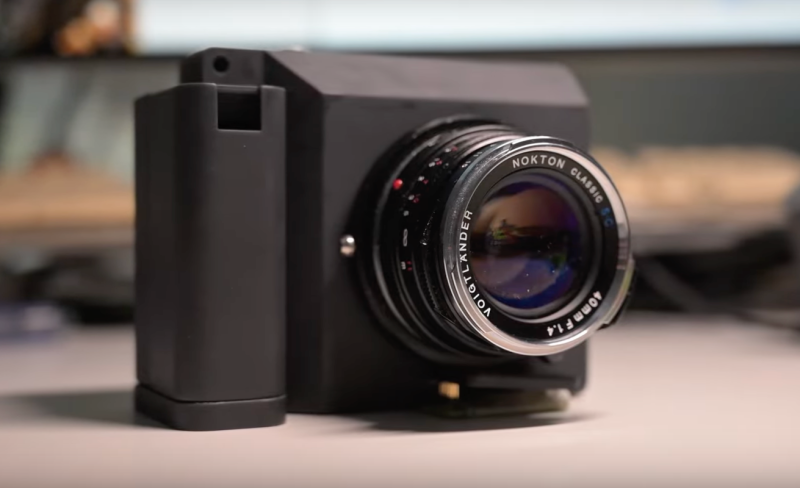At least as far as the inner workings are concerned, there’s not a whole lot of difference between an single-lens reflex (SLR) camera that uses film and a digital SLR (DSLR) camera that uses an electronic sensor except the method for capturing the image. So adding the digital image sensor to a formerly analog camera like this seemed like an interesting project for [Wenting Zhang]. But this camera ballooned a little further than that as he found himself instead building a complete, full-frame digital camera nearly from scratch.
The camera uses a full-frame design and even though the project originally began around the SLR mechanism, in the end [Wenting] decided not to keep this complex system in place. Instead, to keep the design simple and more accessible a mirrorless design is used with an electronic viewfinder system. It’s also passive M lens mount, meaning that plenty of manual lenses will be available for this camera without having to completely re-invent the wheel.
As far as the sensor goes, [Wenting] wanted something relatively user-friendly with datasheets available so he turned to industrial cameras to find something suitable, settling on a Kodak charge-coupled device (CCD) for the sensor paired with an i.MX processor. All of the electronics have publicly-available datasheets which is important for this open-source design. There’s a lot more work that went into this build than just picking parts and 3D printing a case, though, and we’d definitely recommend anyone interested to check out the video below for how this was all done. And, for those who want to go back to the beginnings of this project and take a different path, it’s definitely possible to convert an analog SLR to a digital one.















Wow! Impressive!
open documentation CCD-sensor, sounds neat! till I looked at the retail price…
there seem to be only a few open enough sensors to be used as a private person :/
The whole commercial ecosystem around cameras and the like is completely ridiculous. Manufacturers have created an artificial scarcity that’s really obnoxious. It’s run like a cartel. It’s nearly impossible to get datasheets on sensors that are readily available on Digikey, and forget about getting anything remotely state-of-the-art without shelling out 10s or 100s of thousands and signing NDAs out the wazoo, and half the time they don’t even return your calls. And nobody outside Taiwan and China make any of them nowadays.
nice, a camera from more or less first principles. They used a lens from an SLR, but they really done have the “reflex” action from the slr, or the mirror. Not trying to nitpick here, it’s still a very nice project that goes into the massive effort in trying to take digital photos with a sensor, and all the tuning and optimization that goes along with it.
Interestingly enough, back in the early days of digital photography and before DSLRs were really a thing, there was a company called Silicon Film that was promising to make a digital sensor as a film canister to install into existing SLRs. I don’t think they ever got any products out the door, however, and what they were prototyping quickly became obsolete anyway.
Still, it would have been really interesting from an alternate-history point of view if it had gone anywhere, and this project’s origins reminded me of that.
I remember reading about that back in the day, it made a lot of sense to me. At least one person has taken the concept and built one:
https://hackaday.com/2023/05/12/a-non-destructive-digital-back-for-a-classic-leica/
Yeah! I remember that. It was to look like a 35mm film cassette to hold the circuitry and batteries, with an extension to position the sensor under the pressure plate. I believe the issue is that it would have been model specific, since the distances were not standard. Could have been done for say Nikon & Canon high end cameras and worked, but alas it never materialized.
Back in the day there was the digital back which was essentially replacing the back on the SLR with an assembly that contains a sensor and the electronics. Super expensive so not many were sold.